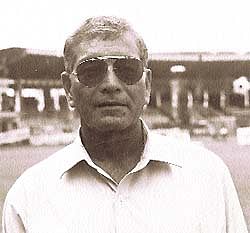One of the most prestigious football tournaments in India, Santosh Trophy will be having its final round in Kerala, Manjeri town of Malappuram district. Kerala happens to be one of the rare states in India, where football is almost like a religion and at par with cricket. So, it is only apt that the state is hosting a significant national event to send out the positive signal that it is in the process of opening up various sectors got affected by the outbreak of Coronavirus. This is nothing less than good news for the people in the state, which bore the heavy brunt of the Covid-19 pandemic. Hence, the timing is also apt to go back in time and to relive some glorious moments in the Santosh Trophy, which is currently struggling to stay relevant with the advent of rampant club culture.
The Genesis
In the year 1941, the AIFF took a wise call that sowed the seeds of an inter-state championship to be played purely on a zonal basis, only for economical reasons. The victorious ones in the various zones would then play in the final rounds and the ultimate winner would get the Santosh Trophy. In the Inaugural edition, a total of 13 teams participated and the number has now grown to 31. For those who are unaware, the trophy got its name from the president of the Indian Football Association in 1941, Manmatha Nath Roy Chowdhuri of Santosh (a place in Bangladesh).
A Goal To Remember Forever

Several top-notch players have featured in the completion from Chuni Goswami, PK Bannerjee to IM Vijayan and Baichung Bhutia. However, one of the most memorable goals came from an unlikely hero Arun Ghosh, an international defender. This happened in the 1960 Calicut Nationals, the most-fancied Bengal were having a torrid time against the resolute Assam in the quarter-finals. The Assam defence was able to clear the Bengal attack partly and when the airborne ball was about to hit the ground, Ghosh, staring at his own goal, produced a scintillating scissors volley that found the net and would have made even Pele proud. This was nothing but an act of conjuring up magic with the foot.
The Dastidar Special
At the beginning of the ’70s, there were not many impressive strikers like Bengal’s Sukalyan Ghosh Dastidar. Goa as a venue had only made its debut at the championships in 1972 and in the Semi-Final, the host faced the mighty Bengal. It looked as if Goa were about to turn the giant slayer. The hosts were leading the game with 2-1 for the better part of the game. However, Dastidar executed a booming 40-yard pile driver to produce an equaliser during the dying moments of the game. Eventually, Bengal not only emerged victorious in the penalty shoot-out in the Semi but also pocketed the trophy of that year by defeating Tamil Nadu 4-1.
Gamble & The Golden Goal

In the 1995 final between Bengal and Punjab at Chennai, Baichung Bhutia scored the golden goal. But before the same, the Bengal’s coach Syed Nayeemuddin raised a few eyebrows. In a bold step, Nayeem brought in a 20-year-old Bhutia as a striker at the expense of International midfielder Gunabir Singh for the clash. This was something new for Bhutia as he has mostly played as a midfielder or a withdrawn striker prior to the match. The new Bengal striker then justified the faith shown by the coach to score an unforgettable golden goal to beat Punjab and lift the trophy. For the uninitiated, the golden goal, also known as golden point, happens to be a rule employed in football and other sports like baseball, ice hockey etc to break the tie. According to the rule, when a game is tied or scores are level during the normal time, then extra time becomes a knockout round as whichever team scores the goal during the stage is declared as the winner.
In the End
Bengal with 32 wins clearly rules the roost in the Santosh Trophy and teams such as Punjab (8), Kerala (6) and Services (6) are making their presence felt, albeit sporadically, in the completion. However, for the last few decades or so the trophy has started losing its sheen. In the beginning, the trophy used to be a significant aspect of the game in India as several names involved in the tournament represented India on the global stage. Sadly now, the Santosh Trophy has become just a platform to get into an I-league club.



















